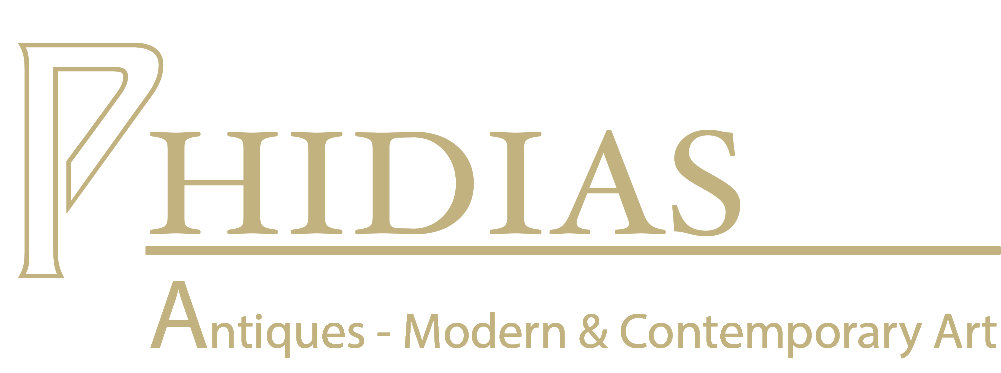Fabio Fabbi
Fabio Fabbi (Bologna, 18 July 1861 - Casalecchio di Reno, 24 September 1945)
Fabio Fabbi was born in Bologna on 18 July 1861 in via Santo Stefano 57. His parents belonged to the Bolognese upper class: his father, Giuseppe, was a surgeon while his mother, Countess Emilia Negri, was a landowner.
The documents testifying to his artistic training in the city of Bologna are kept in the Historical Archive of the Academy of Fine Arts in Bologna. In the Register of Pupils of 1877-78, in fact, he is reported as attending the special course in sculpture in the fifth year, while his brother, Alberto (1859-1906), took up the painting course. The report of 1878 is clear, indicating that Fabbi, sixteen years old at the time, obtained «honorable mentions in elements of figure and sculpture».
In 1878 he moved to the Academy of Fine Arts in Florence to further his sculpture studies under the master Augusto Rivalta, and in 1880 he obtained the Silver Medal for Sculpture from Life as well as a prize of 400 lire. Also within the context of the Florentine Academy was the 1883 sculpture competition of the Thousand Lire won by Fabbi with the bas-relief A question of honour.
It was from 1883-1884 that the artist began to attend the exhibitions organized at the Circolo degli Artisti in Florence, an important crossroads for collectors and lovers of beauty.
His journey to Egypt dates back to 1886, in which he joined his brother Alberto in Alexandria in Egypt. The unpublished photographs taken by the artist constitute an exemplary testimony, in which the oriental sets were reconstructed and where splendid women with lunar skins together with men dressed in Turkish style posed to be photographed and then impressed on the canvas. The shots, taken partly in his studio and partly outdoors with the aid of a Kodak camera, as he himself reports in his notebooks, show the precise desire to record every detail in an aseptic way, reconstructing the scene down to the smallest detail and the atmosphere. Some drawings of the trip were instead published by Fabbi himself in the album Egypt, memories of Fabio Fabbi.
Returning from Egypt, in 1888 he exhibited at the Circolo degli Artisti in Florence A Terrace in Alexandria, Arab Woman, The Potter (today at the Gallery of Modern Art in Florence), Old Muslim. At the Munich International Exhibition he was awarded for the paintings The Sale of a Slave Girl and The Seven Deadly Sins, subjects that often appear among the paintings with which he portrays himself. The decoration of the smoking room of the Villino Sorani in Florence with six large tempera paintings of an oriental subject can be dated to the end of the 1980s. In 1896 he collaborated with the Florentine magazine Fiammetta, creating the periodical's poster in 1897.
In 1899 he won a prize in Turin for a competition for the head of Christ, while he was making a long journey to Munich and Warsaw. Other fundamental trips were to Paris in 1900 of which numerous visual testimonies of the city remain (Boulevard Montmarte; Paris. Place Blanche).
In 1902 he created the masterpiece The death of Anita Garibaldi (today at the Museo del Risorgimento in Florence) which constitutes a unicum in the panorama of the themes chosen by the artist but which presents, perhaps also for this reason, a strong expressive impact in a historical theme felt and shared.
Other works of religious subjects in Bologna and in the surrounding area date back to those years, such as the Salomè with the head of the Baptist from 1897 for the Collegiate Church of San Giovanni in Persiceto, the Sacred Heart from 1902 for the church of Sant'Antonio Abate in Bologna, but also secular like the series dedicated to the illustrious Bolognese created with his brother Alberto in the Sala del Consiglio Comunale of Palazzo d'Accursio.
Fabbi dedicated many works to his beloved Bologna, such as The Two Towers and The Four Towers, pendants of historical value, which preserve intact the city's memory of the towers demolished in Porta Ravegnana. Other subjects were Via orefici, Il Nettuno, Piazza Maggiore, and many others.
In addition to his great contribution to magazines (Fiammetta from 1897, Italia Ride in 1900), Fabbi also devoted himself to illustrating fiction volumes. He collaborated with the most important Italian publishing houses, such as Paravia, Zanichelli, Nerbini, Salani, Gloriosa and Bemporad, certainly distinguishing himself as a point of reference at a national level.
In 1937 he moved to Casalecchio di Reno where he collaborated on a Don Bosco (1941) and a Santa Rita (1944) for the church of San Martino.
He died on 24 September 1945 in Casalecchio di Reno in the now disappeared district of La Fondazza.
[Author: Francesca Sinigaglia 2021]
To remember about Fabio Fabbi
- 1861 – Born in Bologna in via Santo Stefano 571880 – Graduated from the Academy of Fine Arts in Florence 1886 – Trip to Alexandria in Egypt 1899 – Trip to Warsaw 1900 – Trip to Paris 1937 – Transfer to Casalecchio di Reno 1945 – Dies in Casalecchio di Reno
Share on your social profile
Contact us for information regarding the exhibited work
Fill out the form or call to arrange a meeting Mobile 39 335 8125486 Mobile 39 335 7774612

Opening time
- Monday
- - -
- Tue, Wed, Fri
- - -
- Thursday
- -
- Saturday
- - -
- Sunday
- Closed
Via Roma, 22/a, 42100 Reggio Emilia RE







